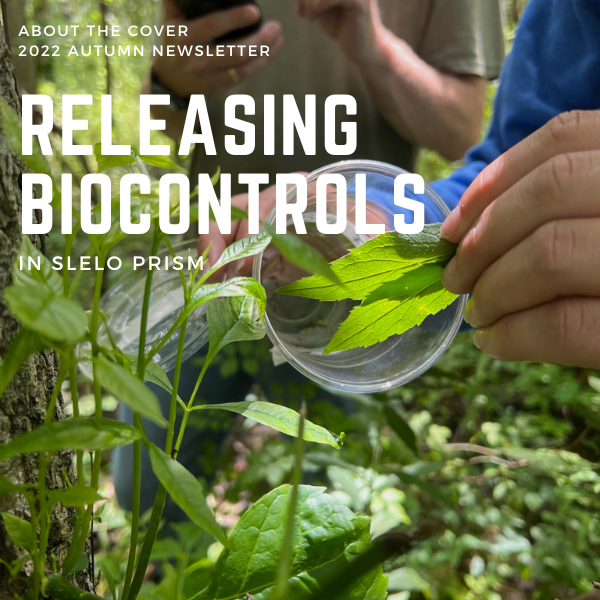This article was featured in the 2022 Autumn Newsletter by Rob Williams and Robert Smith-SLELO PRISM.
SLELO PRISM has implemented a biological control program that may offer long-term suppression of target invasive species. By introducing approved biocontrols (a.k.a. native predators) we can lessen the labor and cost of other management techniques. This enhances our goal of managing lands and forests for resiliency by reducing the impacts of invasive species.
Resiliency, Biodiversity, and Carbon
In the St. Lawrence Eastern Lake Ontario Region, 24 Priority Conservation Areas or PCAs have been identified. These are areas that have ecological importance or may be host to rare, threatened, or endangered species. These same sites may host biodiversity and carbon components. Suppressing priority invasives using multiple techniques at 18 of these PCAs helps sustain the resiliency of these PCAs to external stressors such as a changing climate.
Biological Controls
By suppressing monocultures of invasive plants and forest pests, we can preserve the native composition and biological integrity of priority conservation areas through the liberation of approved biological controls. This year (2022) we released close to 6,000 parasitoids (of 3-different species) for the long-term protection of ash trees from the invasive emerald ash borer.
EAB parasitoids released include:
- Oobius agrili
- Spathius galinae
- Tetrastichus planipennisi
We have also released over 500 (hypena opulenta) insects to suppress swallow-wort and encourage forest regeneration along with 2,000 (Laricobius nigrinus) a biocontrol to suppress hemlock woolly adelgid affecting hemlock trees.
Monitoring
Release sites will be monitored annually to determine both the potential establishment of biocontrols liberated and to assess the impact on the target plants.
Anticipated Outcomes
This project is designed to alleviate the impact that invasive species have on the system and to strengthen these land and forest resources towards their native composition making the sites more resilient to external stressors.
Photos From Biological Control Work















